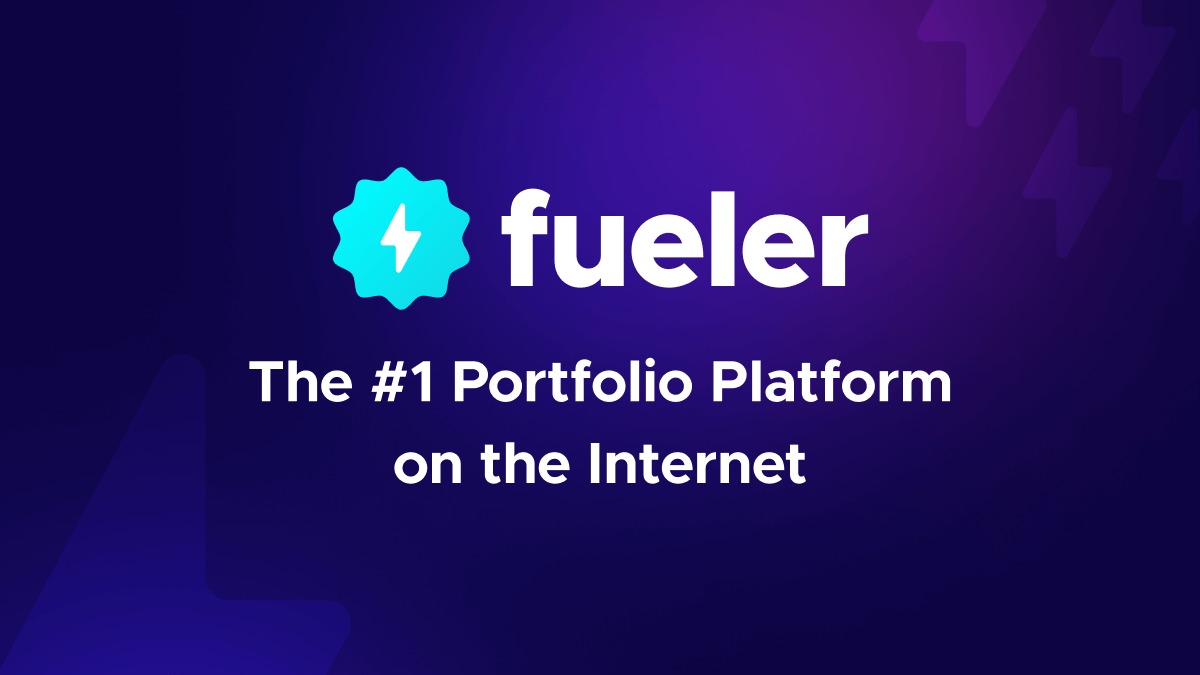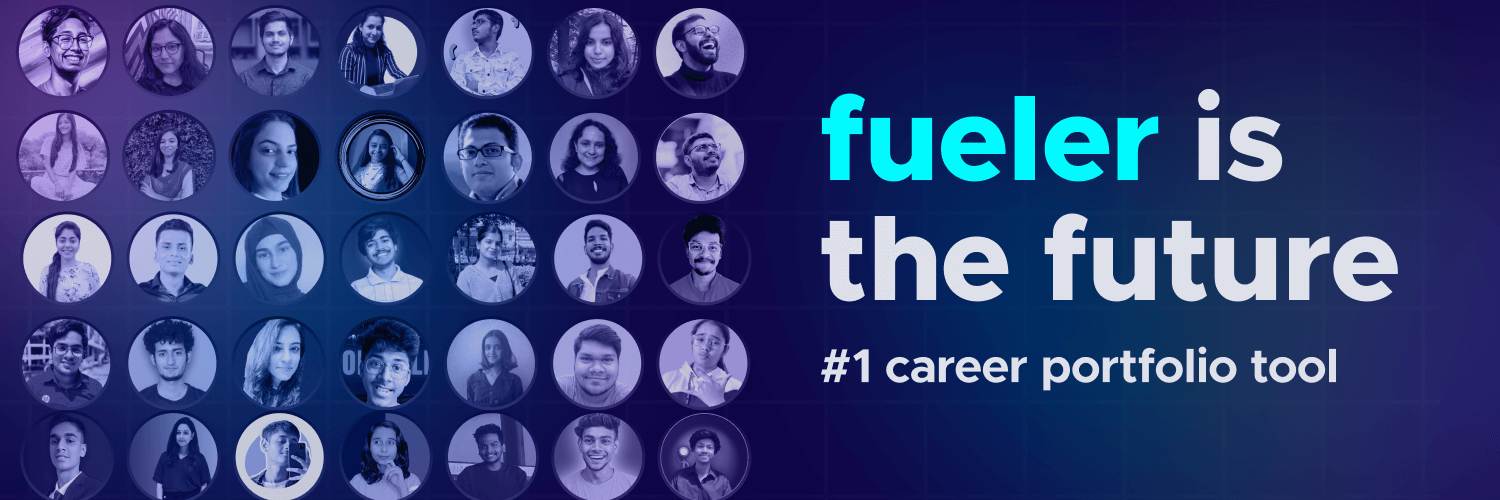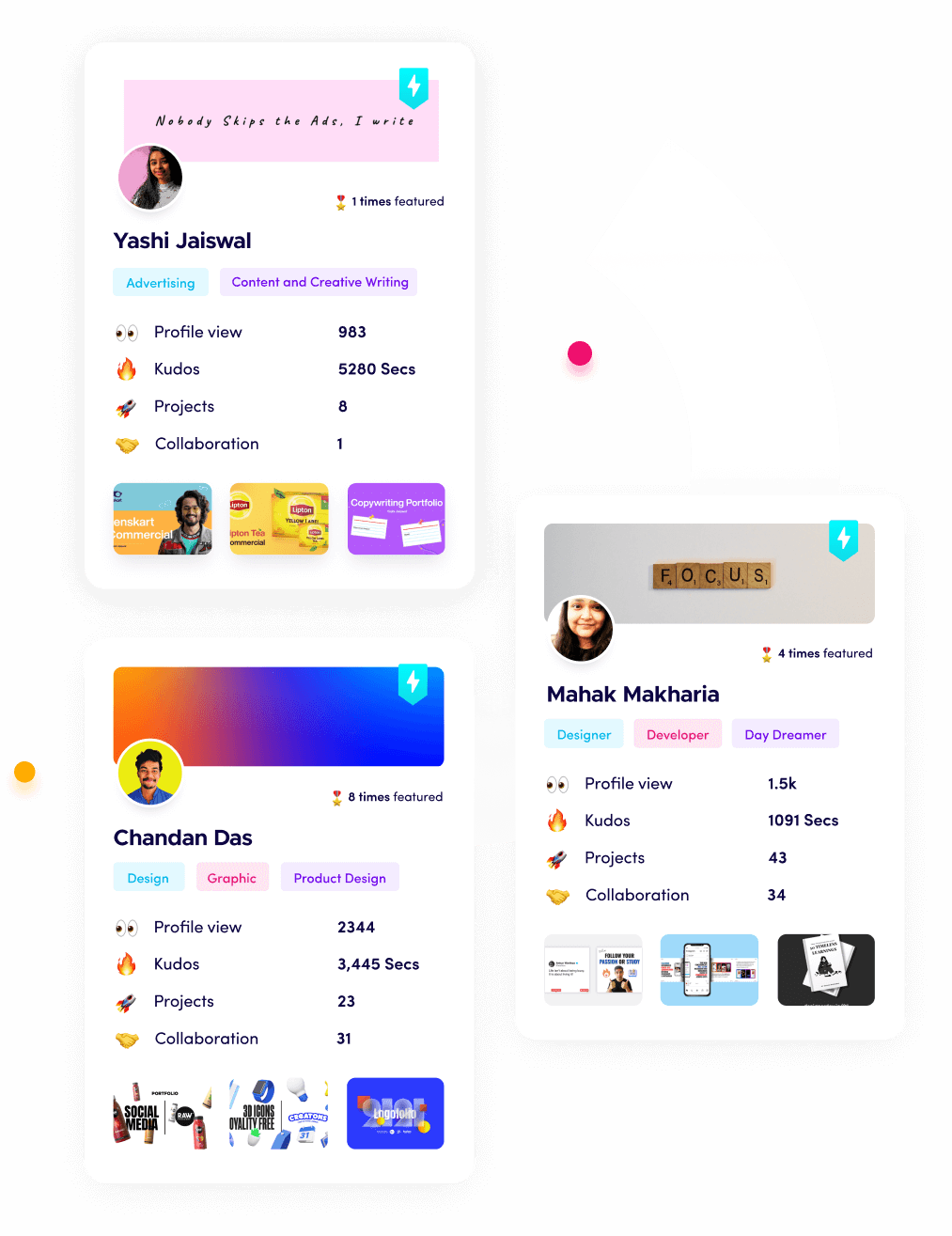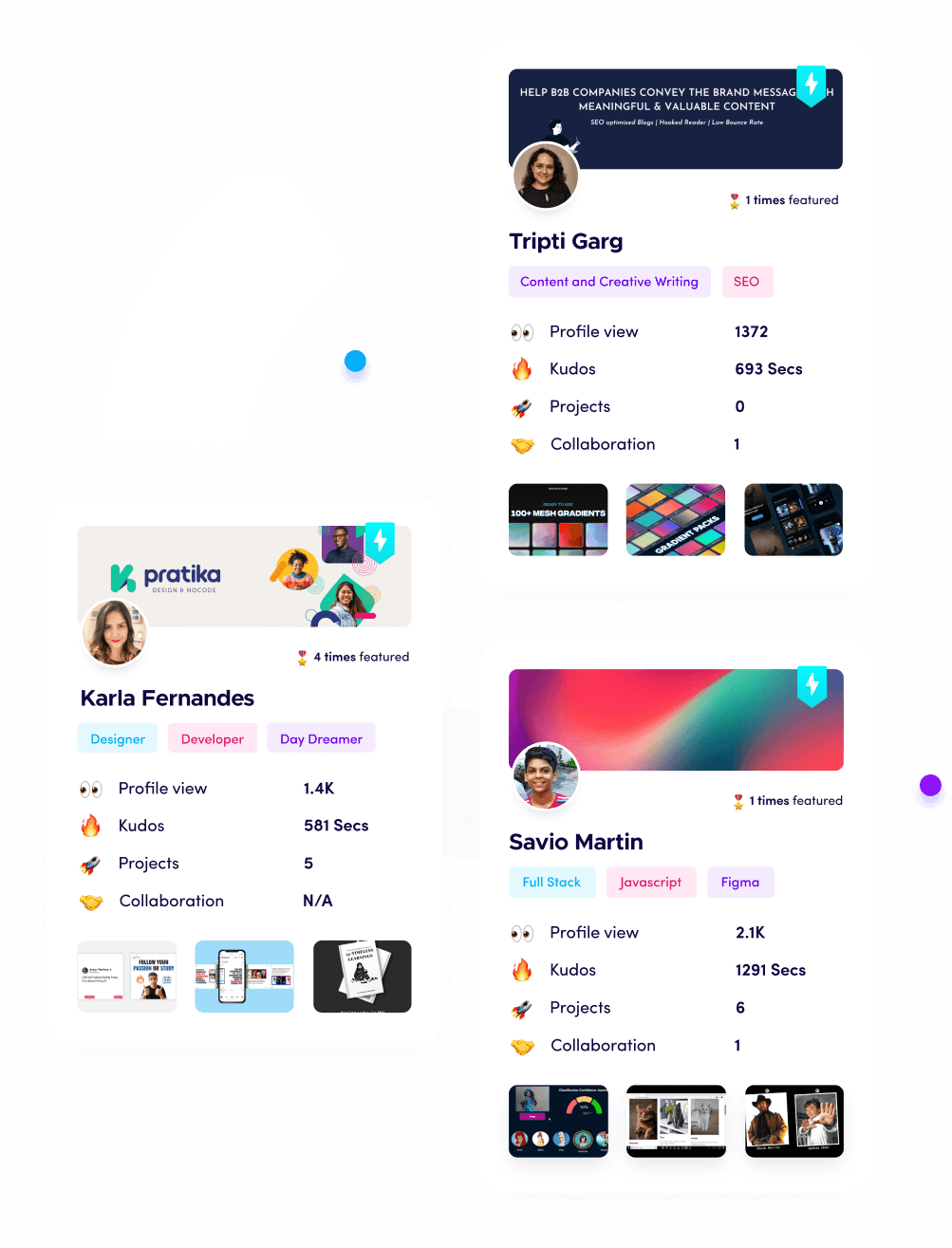Portfolio Ideas for No-Code and Low-Code Builders

Riten Debnath
22 Jun, 2025

The no-code and low-code revolution is not just about building things faster — it’s about making software creation radically accessible. What used to take a team of developers and weeks of time can now be done by one person in a weekend using tools like Webflow, Bubble, Airtable, and Zapier.
But here’s the truth: the most powerful builds often go unnoticed because creators don’t document or showcase their work properly.
That’s why your portfolio isn’t optional anymore — it’s your most powerful professional weapon.
I’m Riten, founder of Fueler.io — a platform that helps freelancers and professionals get hired through the work they’ve done, not just what’s written on their resume. In this article, I’m sharing deep, detailed, and proven portfolio ideas for no-code and low-code creators. Whether you're a freelancer, builder, product person, or indie hacker, this will help you turn your hidden work into opportunities.
Because let’s face it — people don’t hire what they can’t see. And your portfolio? That’s what shows them you’re ready.
Why No-Code & Low-Code Portfolios Are a Game-Changer in 2025
In 2025, startups and companies are desperate for speed. They’re not waiting for a six-week dev cycle to validate an idea — they want to test it now. That’s why they hire people who can use tools over code — and that’s why your portfolio of working solutions is worth more than a resume.
Here’s what’s changed in 2025:
- Companies are hiring through assignments, not job applications
- Freelancers are being vetted via actual output, not job titles
- Businesses care about what you’ve done, not just what you say you can do
A no-code portfolio positions you as a doer, not a talker. It lets people see your thinking, your process, your execution — all without you having to explain it in a pitch or interview.
What Should a No-Code Portfolio Include?
Here’s a checklist every serious builder must follow in 2025:
- Project title + problem solved
- What tool stack was used (e.g., Notion + Make + Airtable)
- Who it was for (real client, personal, concept)
- Live demo or preview link
- Screenshots, screen recordings, or GIFs
- Short story: why you built it and what it achieved
- Call to action (e.g., “Hire me to build something similar”)
1. Landing Page Libraries (Webflow, Framer, Typedream, Dorik)
Landing pages are the most frequent requirement for any online business — product launches, early access programs, sales campaigns, creator portfolios, even wedding invitations. What if your portfolio had 10–15 different styles of landing pages for different industries?
That instantly shows a founder, agency, or client how versatile you are and how fast you can execute based on target audiences.
You can create pages like:
- SaaS product demo page
- Creator course waitlist
- Consulting service promo page
- Event or webinar RSVP
- One-pager for an indie product
What to show:
- Thumbnail grid with hover preview
- Direct “Live View” and “Clone” buttons
- Tool used: Webflow, Dorik, or Framer
- A/B tests you’ve done (if any)
- Short notes on layout or copy strategy
Why it matters:
Anyone can open Webflow, but few can ship, and even fewer can sell. When clients see a wide variety of landing pages from your end, you position yourself as a growth-focused builder, not just a layout expert.
2. Automation Case Studies (Zapier, Make, n8n, Pabbly)
We live in a world of data overload and repetitive tasks. Most small teams waste 10–15 hours every week doing things manually — entering leads, sending follow-ups, copying data between platforms. Automation is the quiet superpower that saves time and money.
A portfolio that showcases how you’ve used tools like Zapier or Make to streamline operations is a goldmine — especially if it includes real numbers and results.
Examples you can build or show:
- Auto-send emails from a Typeform response
- Sync new orders to Google Sheets and notify on Slack
- Create Trello cards when a new Calendly meeting is booked
- Cross-post content between Twitter, LinkedIn, and Notion
What to show:
- Zapier/Make flow screenshots
- Output of automation (e.g., notification, email, row entry)
- Business context (e.g., “Client saved 6 hours/week”)
- Embedded Loom video explaining flow
Why it matters:
Most clients don’t know what’s possible with automation — but they know they’re burning time. Show them how you saved someone’s time or scaled an operation, and they’ll want you on their team immediately.
3. Airtable Dashboards and Internal Tools
Airtable is no longer just a spreadsheet — it’s a backend database, a mini app builder, a CRM, a content calendar, and an internal dashboard all rolled into one. You can build serious tools with it — from sales funnels to inventory trackers to influencer outreach systems.
A good Airtable-based tool in your portfolio can highlight your ability to structure data, design interfaces, and simplify workflows for teams.
Build these examples:
- Podcast guest CRM
- Editorial calendar with Kanban view
- Employee onboarding checklist with automations
- Client feedback collector with metrics dashboard
What to show:
- Live shareable base (view-only)
- GIFs of the user interface and filters
- Button fields, automations, and form integrations
- Use case: what problem does it solve, and for whom?
Why it matters:
Every startup needs internal systems. Most can’t afford complex tools like Salesforce or HubSpot. If your Airtable setup can replace them with a cleaner UI, you become not just a builder — but a strategist.
4. Glide or Softr App Prototypes
You don’t need to code to create a mobile or web app. Tools like Glide and Softr let you turn spreadsheets into full-fledged apps with logic, filters, user permissions, and more.
Imagine showing clients:
- A student attendance tracker
- An internal wiki app
- A budgeting app
- A community directory with profiles and messaging
What to show:
- Short walkthrough video
- Use case for the app
- Screenshot gallery or interactive demo
- Airtable or Google Sheet used as backend
Why it matters:
People hire you because you can turn ideas into usable products. These tools help you do that in 48 hours — your portfolio shows proof of execution.
Quick Note on Presenting Portfolios
I built Fueler.io to solve this exact problem — how do you show the work that got buried in DMs, Notion pages, and side projects?
Fueler is a portfolio platform where you can publish work samples, case studies, or client projects in minutes — and companies can hire based on those. If you’re a no-code or low-code builder, this is the home your work deserves.
Final Thought: Build. Show. Repeat.
You don’t need 20 years of experience. You don’t need big-name clients. You don’t even need a dev degree.
What you do need is visible proof of the work you’ve done — and that’s what your portfolio is.
In 2025, your portfolio is your best salesperson. So don’t let your work stay hidden. Start building it, documenting it, and putting it out in the world.
FAQs
1. What’s the best tool to build a no-code portfolio?
Webflow, Notion, and Fueler are excellent. Fueler is optimized specifically for showcasing work samples and getting discovered by companies hiring through portfolios.
2. Can I build a portfolio without having clients?
Yes. Build mock projects that solve real problems. Use fake brands, or redo public workflows. It’s about showing capability, not client lists.
3. What’s the best no-code stack for building apps in 2025?
Airtable + Glide for mobile apps, Webflow + Zapier for websites, and Bubble for more complex logic-heavy apps.
4. How often should I update my no-code portfolio?
Monthly is ideal. Add every new project, no matter how small. Consistency builds authority and trust.
5. What makes a no-code project portfolio-ready?
It must be complete, solve a specific problem, have a clear demo or screenshot, and tell the story of how you built it and why.
What is Fueler Portfolio?
Fueler is a career portfolio platform that helps companies find the best talents for their organization based on their proof of work.
You can create your portfolio on Fueler, thousands of freelancers around the world use Fueler to create their professional-looking portfolios and become financially independent. Discover inspiration for your portfolio
Sign up for free on Fueler or get in touch to learn more.


